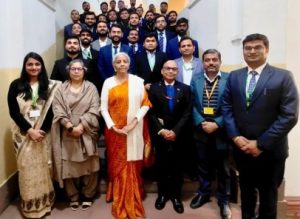Delhi Metro, Brand India flagbearer, now two decades old
By Our Special Correspondent
New Delhi, December 24: Since 2002 when the then Prime Minister Atal Bihari Vajpayee had flagged off the first Metro train in the national capital, Delhi Metro has logged in two decades of expanding services, touching all parts of the city, while also reaching to satellite towns in the national capital region (NCR).
The Bharatiya Janata Party celebrates the birth day of late Vajpayee as the Good Governance Day on December 25. It was the former Chief Minister of Delhi Madan Lal Khurana who had moved the push for bringing the Metro services in the national capital. But it was his successor Sheila Dikshit who understood the criticality of the Delhi Metro in answering the growing needs of the commuters in the national capital. Indo-Japan partnership is also marked by 70 years of diplomatic relations in 2022. Delhi Metro is funded by JICA.
Late Dikshit worked assiduously with the Central government to spread the infrastructure in all the corners of the national capital. She gained support from late Vajpayee and his successor Manmohan Singh, who headed the UPA government for 10 years. Delhi Metro and late Dikshit grew simultaneously, former in its network and latter in her political stature.
Delhi Metro began its operations on December 24, 2002. Late Vajpayee had flagged off the first ever train on the 8.4 kilometer long Shahadara to Tis Hazari corridor of Red Line. Now, Delhi Metro has all shades of colour to identify its networks, which connect the Indira Gandhi International Airport, the business hub of Grugaon and Faridabad, besides Noida and Ghaziabad.
Expansion of Delhi Metro network has been the fastest in the world. As more than 380 kilometres of new lines have been added since 2002. Delhgi Metro currently operates 391 kilometers of metro network with 286 stations on 12 corridors. Delhi Metro is the largest metro network in India, besides being the largest metros in the world.
Delhi Metro network with IV project will add another 65 kilometers soon, as construction is in progress on three approved priority corridors of Phase IV — extension of existing Pink (Majlis Park to Maujpur) and Magenta (R K Ashram Marg to Japankpuri West) Lines. A new Silver Line will come up connecting Tughlakabad to Delhi Aerocity.
Besides, Delhi Metro became the flagbearer of India’s solutions to urban mobilities. Now Metro services are available ins evral Indian cities such as Mumbai, Bengaluru, Chennai, Kochi, Thiuruvananthpuram, Hyderabad, Kanpur, Lucknow, Patna, Ahmedabad, etc.







